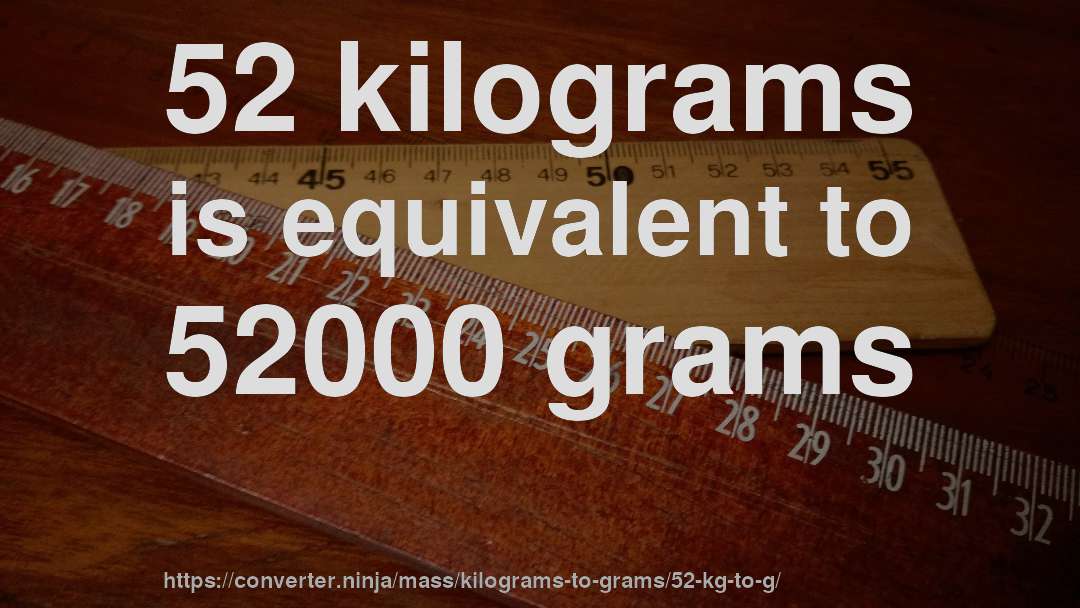
52 kilograms is equivalent to 52000 grams.
We know (by definition) that: 1 kg = 1000 g
We can set up a proportion to solve for the number of grams.
1 kg 52 kg = 1000 g x gNow, we cross multiply to solve for our unknown x:
x g = 52 kg 1 kg * 1000 g → x g = 52000 gConclusion: 52 kg = 52000 g
The inverse of the conversion factor is that 1 gram is equal to 1.92307692307692e-05 times 52 kilograms.
It can also be expressed as: 52 kilograms is equal to 1 1.92307692307692e-05 grams.
Approximation
An approximate numerical result would be: fifty-two kilograms is about fifty-two thousand grams, or alternatively, a gram is about zero times fifty-two kilograms.
Units involved
This is how the units in this conversion are defined:
Kilograms
The kilogram is the base unit of mass in the International System of Units (the Metric system) and is defined as being equal to the mass of the International Prototype of the Kilogram. The avoirdupois (or international) pound, used in both the imperial and US customary systems, is defined as exactly 0.45359237 kg, making one kilogram approximately equal to 2.2046 avoirdupois pounds. Other traditional units of weight and mass around the world are also defined in terms of the kilogram, making the IPK the primary standard for virtually all units of mass on Earth.
Grams
The gram is a metric system unit of mass. Originally defined as the absolute weight of a volume of pure water equal to the cube of the hundredth part of a metre, and at the temperature of melting ice. However, a gram is now defined as one one-thousandth of the SI base unit, the kilogram, or 1×10−3 kg, which itself is now defined, not in terms of grams, but as being equal to the mass of a physical prototype of a specific alloy kept locked up and preserved by the International Bureau of Weights and Measures. This is in the tradition by which many customary local reference standard stones, lengths (objects) and weights were required to periodically undergo comparison with the official nations standard referents, usually with a particular periodicity defined by the countries statuate laws.
[1] The precision is 15 significant digits (fourteen digits to the right of the decimal point).
Results may contain small errors due to the use of floating point arithmetic.ncG1vNJzZmibn6PDpr7Tnqlnppmjt6J7zJqqrGebnrmws9GapKxlpKR6qL7ApqpobWJiuKh506hkoGc%3D